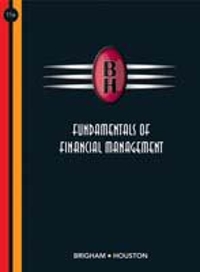Please help solve these corporate finance problems attached below
You are considering a new product launch. The project will cost $680,000, have a four-year life, and have no salvage value; depreciation is straight-line to zero. Sales are projected at 160 units per year, price per unit will be $19,000, variable cost per unit will be $14,000, and fixed costs will be $150,000 per year. The required return on the project is 15%, and the relevant tax rate is 35%. a. Based on your experience, the unit sales, variable cost, and xed cost projections given here are probably accurate to within i 10%. What are the upper and lower bounds for these projections for unit sales, variable cost, and fixed cost? b. What is the base-case NPV? c. What are the NPVs in the best-case and worst-case scenarios? d. Evaluate the sensitivity of your base-case NPV to changes in fixed costs. e. What is this project's cash break-even level of output (ignoring taxes)? f. What is the accounting break-even level of output for this project, and what is the degree of operating leverage (DOL) at the accounting break-even point? How do you interpret this DOL number? 9. What is the financial break-even level of output for this project, and what is the degree of operating leverage (DOL) at the financial break-even point? How do you interpret this DOL number? You are considering a project that will supply an automobile production facility with 35,000 tonnes of machine screws annually for ve years. To get the project started, you will need an initial $1,500,000 investment in threading equipment. The project will last for ve years. The accounting department estimates that annual fixed costs will be $300,000 and that variable costs should be $200 per tonne. The CCA rate for treading equipment is 20%. Accounting estimates a salvage value of $500,000 after costs of dismantling. The marketing department estimates that the auto makers will accept the contract at a selling price of $230 per tonne. The engineering department estimates you will need an initial net working capital investment of $450,000. You require a 13% return and face a marginal tax rate of 38% on this project. a. What is the NPV for this project? Should you pursue this project? b. Suppose you believe that the accounting department's initial cost and salvage projections are accurate only to within 4.45%; the marketing department's price estimate is accurate only to within 110%; and the engineering department's net working capital estimate is accurate only to within 16%. What is your worst-case scenario for this project? Your best-case scenario








